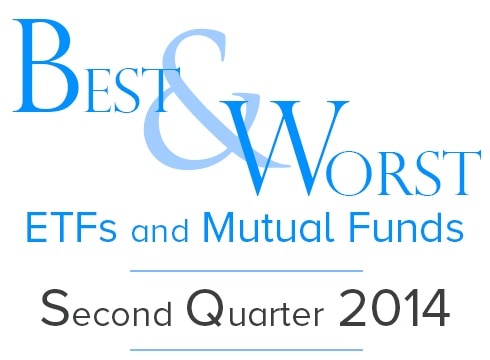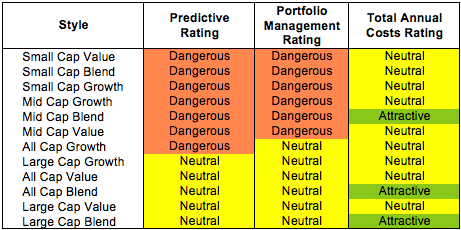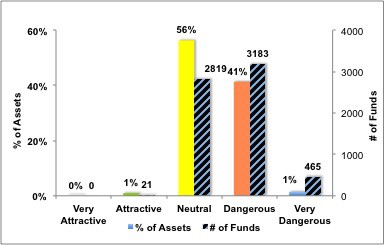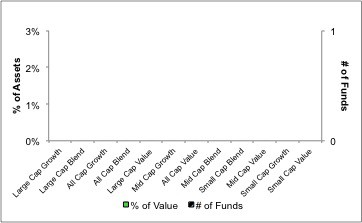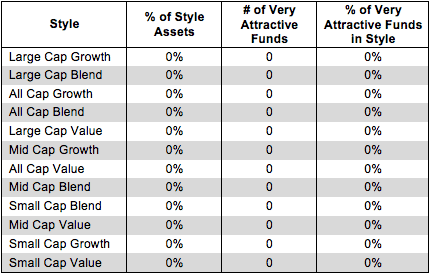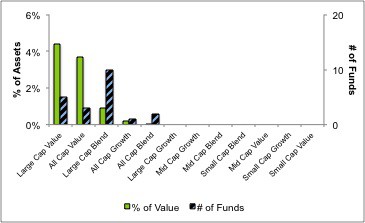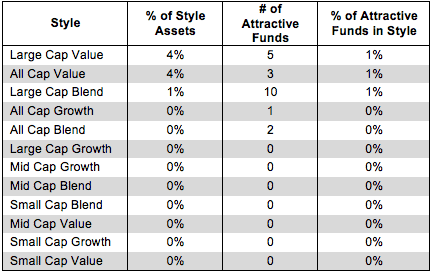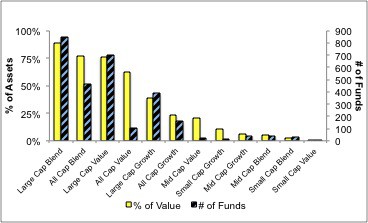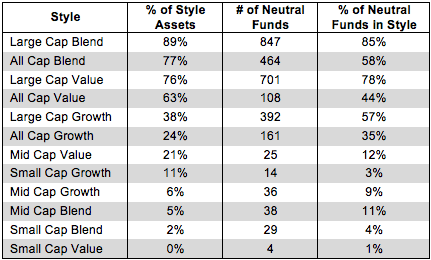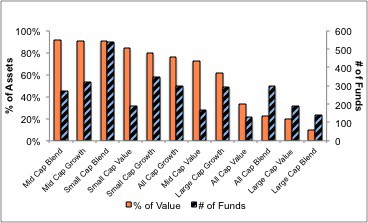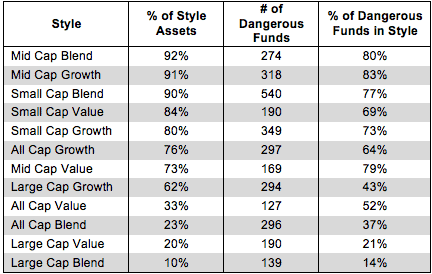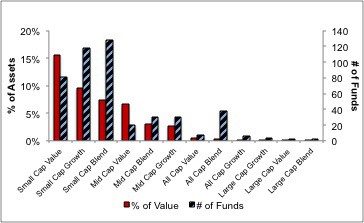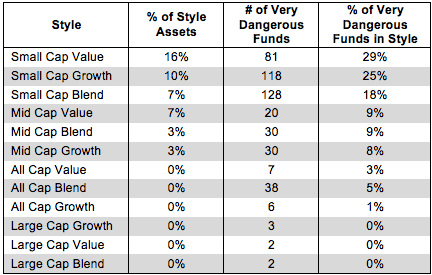No fund style earns better than my Neutral rating going into 2Q14. My style ratings are based on the aggregation of my fund ratings for every ETF and mutual fund in each style.
Investors looking for style funds that hold quality stocks should look no further than the Large Cap Blend and Large Cap Value styles. These styles house the most Attractive-or-better rated funds. Figures 6 and 7 provide details. The primary driver behind an Attractive fund rating is good portfolio management, or good stock picking, with low total annual costs.
Note that the Attractive-or-better Predictive ratings do not always correlate with Attractive-or-better total annual costs. This fact underscores that (1) low fees can dupe investors and (2) investors should invest only in funds with good stocks and low fees.
See Figures 4 through 13 for a detailed breakdown of ratings distributions by investment style. See my ETF & mutual fund screener for rankings, ratings and reports on 7000+ mutual funds and 400+ ETFs. My fund rating methodology is detailed here.
All of my reports on the best & worst ETFs and mutual funds in every sector and investment style are available here. For more products, click here.
Figure 1: Ratings For All Investment Styles
To earn an Attractive-or-better Predictive Rating, an ETF or mutual fund must have high-quality holdings and low costs. Only 21 style ETFs and mutual funds meet these requirements, which is only 0.32% of all style ETFs and mutual funds.
State Street SPDR Dow Jones Industrial Average ETF (DIA) is my top Large Cap Value ETF. It gets my Attractive rating by allocating over 51% of its value to Attractive-or-better-rated stocks.
International Business Machines Corp (IBM) is one of my favorite stocks held by DIA. Over the past decade, IBM has grown after-tax profit (NOPAT) by 8% compounded annually. The company currently earns a top quintile return on invested capital (ROIC) of 15% and has generated positive economic earnings in all but one of the last 16 years. Despite this impressive profit growth and outstanding profitability, IBM remains undervalued. At the current price of ~$195/share, IBM has a price to economic book value (PEBV) ratio of 1.0. This ratio implies the market expects IBM to never grow NOPAT for the remaining life of the company. This expectation seems rather low given IBM’s long-term track record. Despite the small decline in NOPAT in 2013, IBM has proven the ability to adapt and continue to grow.
American Century Capital Portfolios, Inc: Small Cap Value Fund (ACSCX) is my worst Small Cap Blend mutual fund. It gets my Very Dangerous rating by allocating over 58% of its value to Neutral-or-worse-rated stocks, and to make matters worse, charges investors annual costs of 5.26%.
Entravision Communications Corp (EVC) is one of my least favorite stocks held by ACSCX. Over the past seven years, EVC’s NOPAT has actually declined by 9% compounded annually. The company currently earns a bottom quintile ROIC of 3%. On top of this, EVC has not generated positive economic earnings in any year since 2000. Despite these signs of decline, EVC is priced like a rapidly growing company. Over the past year, EVC has risen 80%. To justify its current valuation of ~$6/share, EVC would need to grow NOPAT by 10% compounded annually for the next 40 years. To reiterate, EVC is a company with declining NOPAT and ROIC, that is currently priced for double-digit growth for the next four decades. Investors should stay away from this overvalued stock.
Figure 2 shows the distribution of our Predictive Ratings for all investment style ETFs and mutual funds.
Figure 2: Distribution of ETFs & Mutual Funds (Assets and Count) by Predictive Rating
Figure 3 offers additional details on the quality of the investment style funds. Note that the average Total Annual Cost of Very Dangerous funds is almost 7 times that of Attractive funds.
Figure 3: Predictive Rating Distribution Stats
 * Avg TAC = Weighted Average Total Annual Costs
* Avg TAC = Weighted Average Total Annual Costs
Source: New Constructs, LLC and company filings
This table shows that only the best of the best funds get our Very Attractive Rating: they must hold good stocks AND have low costs. Investors deserve to have the best of both and we are here to give it to them.
Figure 4 presents a mapping of Very Attractive funds by investment style. The chart shows the number of Very Attractive funds in each investment style and the percentage of assets in each style allocated to funds that are rated Very Attractive.
No investment style funds earn our Very Attractive rating.
Figure 4: Very Attractive ETFs & Mutual Funds by Investment Style
Figure 5 presents the data charted in Figure 4
Figure 5: Very Attractive ETFs & Mutual Funds by Investment Style
Figure 6 presents a mapping of Attractive funds by investment style. The chart shows the number of Attractive funds in each style and the percentage of assets allocated to Attractive-rated funds in each style.
Note that the Large Cap Value, Large Cap Blend, All Cap Value, All Cap Growth, and All Cap Blend are the only styles with Attractive-rated funds.
Figure 6: Attractive ETFs & Mutual Funds by Investment Style
Figure 7 presents the data charted in Figure 6.
Figure 7: Attractive ETFs & Mutual Funds by Investment Style
Figure 8 presents a mapping of Neutral funds by investment style. The chart shows the number of Neutral funds in each investment style and the percentage of assets allocated to Neutral-rated funds in each style.
Figure 8: Neutral ETFs & Mutual Funds by Investment Style
Figure 9 presents the data charted in Figure 8.
Figure 9: Neutral ETFs & Mutual Funds by Investment Style
Figure 10 presents a mapping of Dangerous funds by fund style. The chart shows the number of Dangerous funds in each investment style and the percentage of assets allocated to Dangerous-rated funds in each style.
Eight out of the twelve investment styles allocate more than half of their total net assets to Dangerou rated stocks. This means investors are disprportionately allocating assets to funds with poor holdings.
Figure 10: Dangerous ETFs & Mutual Funds by Investment Style
Figure 11 presents the data charted in Figure 10.
Figure 11: Dangerous ETFs & Mutual Funds by Investment Style
Figure 12 presents a mapping of Very Dangerous funds by fund style. The chart shows the number of Very Dangerous funds in each investment style and the percentage of assets in each style allocated to funds that are rated Very Dangerous.
Figure 12: Very Dangerous ETFs & Mutual Funds by Investment Style
Figure 13 presents the data charted in Figure 12.
Figure 13: Very Dangerous ETFs & Mutual Funds by Investment Style
Kyle Guske II contributed to this report
Disclosure: David Trainer and Kyle Guske II receive no compensation to write about any specific stock, sector or theme.
